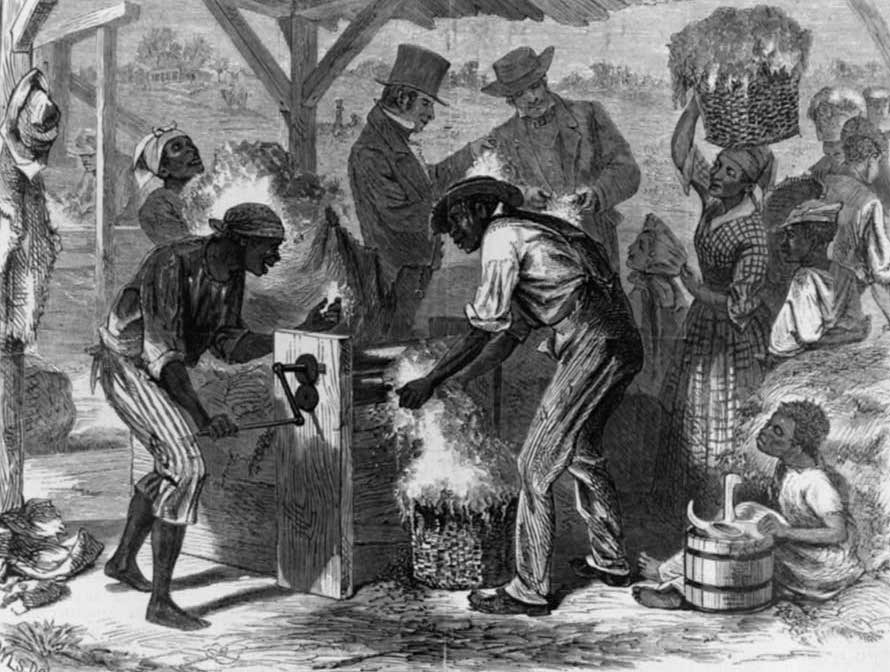1793- Cotton Gin Introduced

Cotton Gin
Eli Whitney, a young New Englander, invented a cotton "gin," which automatically cleaned cotton. This transformed the Southern economy, making cotton "king" and greatly increasing the need for slaves.
After the Revolutionary War, the South was in search of a new crop to replace Indigo, whose trade it had lost to India during the war. Cotton emerged as a potential alternative, but the commonly known long-staple or Egyptian cotton could only be grown in the sandy soils and long growing seasons of the US Atlantic Islands. The alternative, short-season cotton, had sticky seeds that were difficult to separate. This challenge led to the innovation by Eli Whitney.
Born in Westboro, Massachusetts, in 1765, Whitney was the son of a small farmer who also ran a small manufacturing business. As a boy, Whitney made nails for sale. He attended Yale and, after graduating, became a tutor in South Carolina. It was there that he learned about the challenges of ginning (or cleaning) cotton and conceived the idea of a machine to facilitate the process. He designed a roller studded with nails half an inch apart. As the roller turned, the nails passed through a grid, pulling the cotton lint through and leaving the seeds behind. The lint was then removed from the nails, while the seeds fell off separately. This invention enabled a single laborer to do the work that previously required 25 laborers, making upland cotton economically viable for the first time.
Whitney received a patent for his invention, but its simplicity led to widespread copying. He struggled to enforce the patent. Ultimately, most of the income Whitney received from his invention came not from producing it in a Connecticut factory he set up but from state governments. South Carolina paid him $50,000 for patent infringement in the state, North Carolina contributed $30,000 through a special tax on cotton, and Tennessee added $10,000.
The development of the cotton gin had an unprecedented effect. In 1793, the United States produced about five million pounds of cotton, mostly of the Sea Island type, representing less than 1% of the world’s cotton production. By 1860, the US was producing 2 billion pounds of cotton, accounting for over 75% of global production.
The impact of the cotton gin on slavery was profound. Before the gin's introduction, the demand for slaves was modest, and they were not highly valued; a slave could be purchased for $300 before the gin, but by the time of the Civil War, the cost had risen to $3,000. Cotton farming was labor-intensive, and despite the gin, it was slavery that made its large-scale cultivation possible.
 >
>